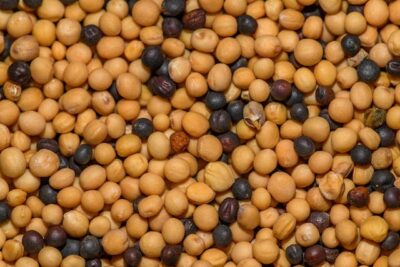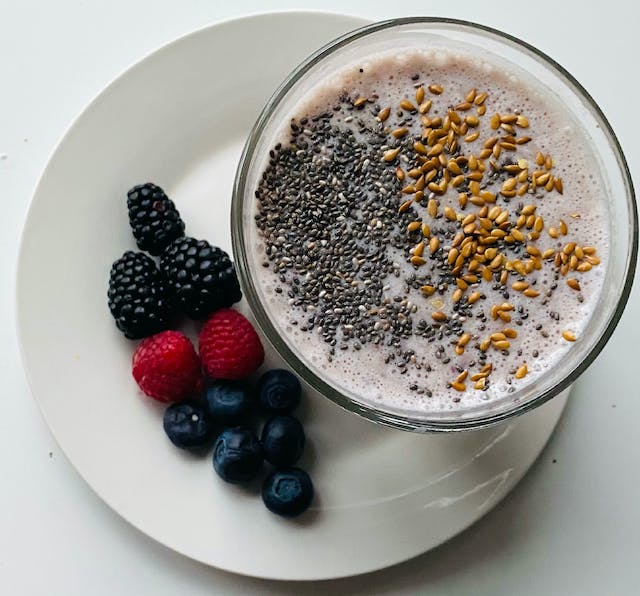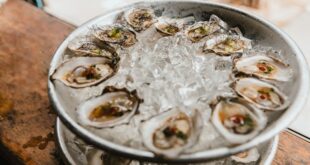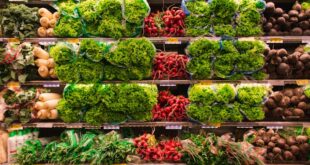Some plants contain phytoestrogens, which are naturally occurring plant defense chemical compounds used to damage the predator’s endocrine system by interfering with hormonal signaling pathways, leading to reduced feeding and growth rates, altered development, and even toxicity in some cases.
These compounds mimic the activity of estrogen in the human body. These compounds won’t kill you today but over time problems arise.
Understanding Phytoestrogens

Phytoestrogens, also known as dietary estrogens, are a diverse group of naturally occurring compounds primarily found in plant-based foods such as soybeans, flaxseeds, lentils, chickpeas, and whole grains.
These compounds structurally resemble estrogen and can interact with estrogen receptors in the body, exerting either estrogenic or antiestrogenic effects depending on various factors including dosage and individual hormonal status.
Health Risks
Phytoestrogens, such as isoflavones, lignans, and Coumestans, mimic the action of estrogen in the body, which causes effects on human health.
They block the natural estrogenic process as they fight for the same receptors.
Endocrine disruption is the main concern with phytoestrogens. They are capable of interfering with hormone balance, particularly estrogen and testosterone levels.
They can interfere with converting testosterone into estrogen.
This disruption has significant implications for reproductive health, potentially leading to infertility, menstrual irregularities, and adverse pregnancy outcomes.
Recent studies show a link between phytoestrogen exposure and an increased risk of certain cancers, notably breast and prostate cancers.
These compounds estrogenic activity promote the growth of hormone-sensitive tumors, particularly for individuals with a predisposition to cancer.
Problems with phytoestrogens:
- Disrupt hormonal balance: Phytoestrogens mimic the effects of estrogen in the body, disrupting hormonal balance and leading to various health issues.
- Increased risk of certain cancers: Studies suggest that high levels of phytoestrogens are associated with an increased risk of certain cancers, such as breast and prostate cancer.
- Thyroid function disruption: Phytoestrogens interfere with thyroid function, leading to thyroid disorders and related symptoms.
- Reproductive issues: Excessive intake of phytoestrogens leads to reproductive issues in both men and women, including reduced fertility and menstrual irregularities.
- Allergic reactions: Some individuals may be allergic to certain types of phytoestrogens, leading to allergic reactions such as skin rashes, itching, or respiratory problems.
- Digestive issues: Consumption of high amounts of phytoestrogens causes digestive issues such as bloating, gas, and diarrhea in some individuals.
- Endocrine disruption: Phytoestrogens disrupt the endocrine system, which regulates various bodily functions, leading to a range of health problems.
- Negative impact on bone health: Research suggests that excessive consumption of phytoestrogens has a negative impact on bone health and increases the risk of osteoporosis.
- Interference with medication: Phytoestrogens interfere with the effectiveness of certain medications, leading to dangerous interactions or reduced efficacy of the drugs.

Developmental Concerns
The impact of phytoestrogens on fetal development and childhood health is particularly concerning.
Prenatal exposure to these compounds has been associated with adverse effects on infant health, including altered reproductive development and increased susceptibility to chronic diseases later in life.
Phytoestrogen puts infants at risk for growth problems and altered sexual development.
Studies have shown the early onset of puberty, raising questions about their potential role in disrupting normal hormonal development during critical stages of growth and maturation.
Neurological Effects
Phytoestrogens have been shown to impair cognition and cause neurological disorders.
Phytoestrogen compounds can cross the blood-brain barrier and disrupt brain function and development.
Research has shown a link between phytoestrogen exposure and mood disorders, which begs the question, do we need more studies on mental health and phytoestrogens?
Environmental Concerns
Phytoestrogens not only impact humans but also the environment.
The impact on wildlife and aquatic ecosystems is also a danger.
Endocrine disruption in wildlife from exposure to phytoestrogen-containing plants can have major effects on ecological balance and biodiversity.
Phytoestrogen runoff from crop agriculture contaminates water sources, posing a threat to fish, animals who drink the water and the entire ecosystem.
Phytoestrogens have a wide range of health risks, from endocrine disruption to cardiovascular dysfunction, neurological effects, and environmental hazards.
Research will continue to unravel the complexities of phytoestrogen biology; it is important to be aware of them and be cautious in consuming them.
Keep an eye out and stay away from Soy Milk!
Here’s a general list of 100 plants known for their relatively higher phytoestrogen content, organized by potency:
1-Soybeans and Soy Products: Rich in isoflavones, particularly genistein and daidzein.
2-Flaxseeds (Linseeds): High in lignans, especially secoisolariciresinol diglucoside (SDG).
3-Red Clover: Contains various isoflavones including formononetin, biochanin A, and genistein.
4-Chickpeas (Garbanzo Beans): Moderate levels of phytoestrogens, mainly isoflavones and lignans.
5-Sesame Seeds: Contain lignans such as sesamin and sesamolin.
6-Alfalfa Sprouts: Rich in coumestans, particularly coumestrol.
7-Mung Beans: Contain isoflavones like daidzein and genistein.
8-Lentils: Moderate levels of isoflavones and lignans.
9-Wheat Germ: Contains lignans, albeit in lower concentrations compared to flaxseeds.
10-Oats: Contains lignans and coumestrol in smaller amounts compared to other grains.
11-Sesbania Grandiflora (Agathi Keerai): Contains phytoestrogens such as daidzein and genistein.
12-Hops: Rich in prenylflavonoids, including 8-prenylnaringenin (8-PN), a potent phytoestrogen.
13-Licorice Root: Contains isoflavonoids and other phytoestrogenic compounds.
14-Angelica (Dong Quai): Contains phytoestrogens including coumestans and ligustilide.
15-Dong Quai: Known for its coumarin derivatives, which exhibit phytoestrogenic activity.
16-Fennel: Contains phytoestrogens such as anethole and estragole.
17-Pueraria Mirifica (Kwao Krua): Rich in isoflavones, particularly miroestrol and deoxymiroestrol.
18-Black Cohosh: Contains triterpene glycosides with weak estrogenic activity.
19-Dandelion: Contains phytoestrogens such as flavonoids and coumestans.
20-Sunflower Seeds: Contain lignans and other phytoestrogenic compounds.
21-Sage: Contains phytoestrogenic compounds including flavonoids and phenolic acids.
22-Hops (Humulus lupulus): Rich in 8-prenylnaringenin (8-PN), a potent phytoestrogen.
23-Safflower: Contains lignans and other phytoestrogenic compounds.
24-Alfalfa (Medicago sativa): Rich in coumestans, especially coumestrol.
25-Soy Protein Isolate: Concentrated source of isoflavones like genistein and daidzein.
26-Lima Beans: Contain isoflavones and other phytoestrogenic compounds.
27-Rye: Contains lignans and coumestans in moderate amounts.
28-Barley: Contains lignans and other phytoestrogenic compounds.
29-Wheat: Contains lignans and other phytoestrogenic compounds, albeit in lower amounts compared to flaxseed.
30-Millet: Contains lignans and other phytoestrogenic compounds.
31-Chasteberry (Vitex agnus-castus): Contains phytoestrogens and other compounds that interact with hormonal pathways.
32-Kudzu (Pueraria lobata): Rich in isoflavones, particularly puerarin.
33-Hemp Seeds: Contain lignans and other phytoestrogenic compounds.
34-Red Wine: Contains resveratrol, a polyphenol with weak estrogenic activity.
35-Coffee: Contains phytoestrogenic compounds such as lignans.
36-Green Tea: Contains catechins and other polyphenols with weak estrogenic activity.
37-Sesbania Esculenta (Egyptian Riverhemp): Contains phytoestrogens including daidzein and genistein.
38-Anise: Contains phytoestrogenic compounds such as anethole.
39-Caraway: Contains phytoestrogens including flavonoids and coumestans.
40-Fenugreek: Contains phytoestrogens such as diosgenin and trigonelline.
41-Oregano: Contains phytoestrogenic compounds including flavonoids and phenolic acids.
42-Soy Milk: Derived from soybeans, rich in isoflavones like genistein and daidzein.
43-Tofu: Soy-based product rich in isoflavones and other phytoestrogenic compounds.
44-Tempeh: Fermented soybean product rich in isoflavones and other phytoestrogenic compounds.
45-Miso: Fermented soybean product rich in isoflavones and other phytoestrogenic compounds.
46-Kale: Contains phytoestrogenic compounds including flavonoids and glucosinolates.
47-Broccoli: Contains phytoestrogenic compounds including flavonoids and glucosinolates.
48-Cabbage: Contains phytoestrogenic compounds including flavonoids and glucosinolates.
49-Brussels Sprouts: Contains phytoestrogenic compounds including flavonoids and glucosinolates.
50-Collard Greens: Contains phytoestrogenic compounds including flavonoids and glucosinolates.
51-Pomegranate: Contains phytoestrogenic compounds including flavonoids and ellagitannins.
52-Pumpkin Seeds: Contain lignans and other phytoestrogenic compounds.
53-Soy Sauce: Derived from fermented soybeans, contains isoflavones and other phytoestrogenic compounds.
54-Sesbania Herbacea (Naked-Stem Sesbania): Contains phytoestrogens including daidzein and genistein.
55-Almonds: Contain lignans and other phytoestrogenic compounds.
56-Walnuts: Contain lignans and other phytoestrogenic compounds.
57-Peppermint: Contains phytoestrogenic compounds including flavonoids and phenolic acids.
58-Cranberries: Contain phytoestrogenic compounds including flavonoids and ellagic acid.
59-Blueberries: Contain phytoestrogenic compounds including flavonoids and anthocyanins.
60-Cilantro (Coriander): Contains phytoestrogenic compounds including flavonoids and phenolic acids.
61-Parsley: Contains phytoestrogenic compounds including flavonoids and phenolic acids.
62-Chia Seeds: Contain lignans and other phytoestrogenic compounds.
63-Sunflower Sprouts: Contain lignans and other phytoestrogenic compounds.
64-Sesame Sprouts: Contain lignans and other phytoestrogenic compounds.
65-Lignan-Rich Foods (e.g., Sesame Oil, Flaxseed Oil, Whole Grains): Various foods rich in lignans, which are converted by gut bacteria into enterolignans with weak estrogenic activity.
66-Parsley Root: Contains phytoestrogenic compounds including flavonoids and phenolic acids.
67-Garlic: Contains phytoestrogenic compounds including flavonoids and sulfur compounds.
68-Ginger: Contains phytoestrogenic compounds including flavonoids and phenolic acids.
69-Sage: Contains phytoestrogenic compounds including flavonoids and phenolic acids.
70-Dill: Contains phytoestrogenic compounds including flavonoids and phenolic acids.
71-Blackberries: Contain phytoestrogenic compounds including flavonoids and anthocyanins.
72-Raspberries: Contain phytoestrogenic compounds including flavonoids and anthocyanins.
73-Strawberries: Contain phytoestrogenic compounds including flavonoids and anthocyanins.
74-Grapes: Contain phytoestrogenic compounds including flavonoids and resveratrol.
75-Currants: Contain phytoestrogenic compounds including flavonoids and anthocyanins.
76-Cocoa Powder: Contains phytoestrogenic compounds including flavonoids and theobromine.
77-Cherries: Contain phytoestrogenic compounds including flavonoids and anthocyanins.
78-Plums: Contain phytoestrogenic compounds including flavonoids and anthocyanins.
79-Apples: Contain phytoestrogenic compounds including flavonoids and phenolic acids.
80-Oranges: Contain phytoestrogenic compounds including flavonoids and hesperidin.
81-Grapefruit: Contain phytoestrogenic compounds including flavonoids and naringin.
82-Tangerines: Contain phytoestrogenic compounds including flavonoids and nobiletin.
83-Mangoes: Contain phytoestrogenic compounds including flavonoids and mangiferin.
84-Peaches: Contain phytoestrogenic compounds including flavonoids and phenolic acids.
85-Pears: Contain phytoestrogenic compounds including flavonoids and phenolic acids.
86-Nectarines: Contain phytoestrogenic compounds including flavonoids and phenolic acids.
87-Apricots: Contain phytoestrogenic compounds including flavonoids and phenolic acids.
88-Ginger Root: Contains phytoestrogenic compounds including flavonoids and gingerol.
89-Clove: Contains phytoestrogenic compounds including flavonoids and eugenol.
90-Turmeric: Contains phytoestrogenic compounds including flavonoids and curcumin.
91-Pomegranate Seeds: Contain phytoestrogenic compounds including flavonoids and ellagitannins.
92-Watermelon: Contains phytoestrogenic compounds including flavonoids and lycopene.
93-Cucumber: Contains phytoestrogenic compounds including flavonoids and lignans.
94-Pumpkin: Contains phytoestrogenic compounds including flavonoids and beta-carotene.
95-Butternut Squash: Contains phytoestrogenic compounds including flavonoids and beta-carotene.
96-Acorn Squash: Contains phytoestrogenic compounds including flavonoids and beta-carotene.
97-Delicata Squash: Contains phytoestrogenic compounds including flavonoids and beta-carotene.
98-Spaghetti Squash: Contains phytoestrogenic compounds including flavonoids and beta-carotene.
99-Artichoke: Contains phytoestrogenic compounds including flavonoids and cynarin.
100-Leeks: Contain phytoestrogenic compounds including flavonoids and quercetin.
 Growing Younger Everyday What Works For Me
Growing Younger Everyday What Works For Me





